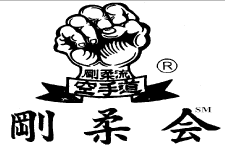|
| |
What is Karate?
Karate is an intangible cultural
inheritance that represents a unique creativity to the Asian Martial Arts. Though its
origin can be traced back to East India in 200-300 BC, the majority of its system was
established in China during the next two millenium. The Japanese modification in the 19th
century transformed the system from the art of Kang Fu, or ÷v, Tai-Chi Chuan or
¾É, and other precedent Chinese art forms that varied its name depending upon its
time and place.
"Karate", or óè
named in Japan for the art now was a complexly reformed Chinese art mixed with a similar
system that existed in Okinawa, or «ê, an island of 454 square miles at the South West
of mainland Japan. Like dance, the art has been practiced as a form of performing arts.
However, unlike dance the art inherited actual tactics of the hand-to-hand combat though
they were formalized and recreated into aesthetic compositions. The art also inherited
ritualistic and ceremonial nature of tradition and discipline that is implicated with the
physical confrontations.
Anthropologists often define
humans as a peace loving being for nature. Psychologists also refer to the complexities of
human anxiety toward the physical confrontation thus to avert its intensity. It appears
that human ability to engage in duel confrontation is a learned trait through training
rather than by a genetic nature. The art, hence, adopted by the educational institutions
to utilize the art as for an educational tool not only for a physical fitness program but
also for a form of discipline for youth to cope with the situation.
As for a principle, the art of
karate applies only a pair of bare hands and legs because the art was developed at a
peculiar social environment where the majority of the people had no access to the arm.
In the beginning there were some sets of composition named KATA , or `. They are so old
thus their creators' name and nationality are unknown. Practitioners were to drill the
choreographed compositions for precision in terms of executing the serial forms of
strikes, kicks, joint-lock, grabbing and throws. Due to its nature of movements, every
form requires execution in isotonic tension on limbs as well as an aerobic motion.
Consequently its drill contributes to the cardiac maintenance, and building up motor skill
for both the old and young. For that reason in Okinawa, the art was a part of the physical
education program in the various communities.
It was Japanese, in the main
land, who developed the dual combative application reviving the formalized tactics in kata
into a free sparring form, named kumite, or ©Rgè. Eventually Japanese attempted to
reform the art into a sport. Like as western fencing, a judging criterion was established
by using scoring point. As a sport, Karate became major body of activity in the art after
the end of Pacific War.

Origin of Karate
Origin of Goju-Ryu
Karate
|

